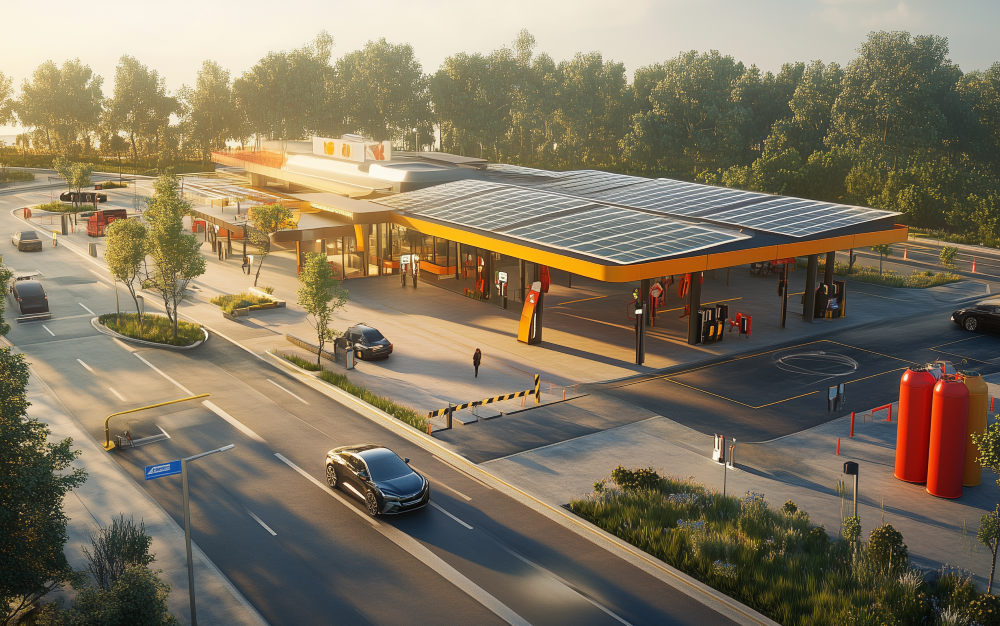In a previous article that discussed the need for intermediate energy buffering in EV charging stations, we stated the need for several types of electrical intermediate storage. Depending on the needs to be covered, namely micropeaks, peak shaving, daily storage, and longer timeframes, different solutions appear in the picture, and none of them can cover them all. Is there an ideal configuration that combine seasonal storage and daily use? Difficult to state in certainty, but let’s explore some ideas and popular beliefs that might be wrong: Does Pumped hydro suits seasonal storage? Is Lithium Ion so good for daily use? Why would it be interresting to store energy for the generations in 100 or 1000 years?
Exploring the full time range, from milliseconds to gigaseconds, every type of dynamics has its role in the overall energy delivery ecosystem. For instance, on the short time scale, instant dynamics are crucial for ensuring grid stability and allowing so-called microspikes in the loads (namely EV chargers). Typically Supercapacitors are able to absorb high power bursts in milliseconds, and sustain high load up to minutes. Clearly not suitable for a full charge but taking all transients with long lasting life allowing many charge cycles. That’s a first piece in the puzzle of our EV charging facility that embody energy sources and storages.
From minutes to hours/days, with few seconds response time dynamics, Lithium based batteries can act as intermediate energy buffers. Poor life cycling and much lower power capability than Supercapacitors, they can still keep energy from hours to days and show ideal behaviour for slow peak shaving if one requires steady solar energy source delivery. Lithium based batteries seem to require strong cooling and can’t be used for answering strong grid/load fluctuations. In a similar dynamic range yet a bit longer with a storage capability of few hours to weeks, Vanadium Redox Flow Batteries are highly scalable and suited for 24/7 operation, they’re also relevant for land-limited stations.
Mechanical storage comes often as candidate for seasonal storage. Pumped hydro for instance has relatively fair dynamics (few minutes), quite high power peak capabilities and can easily sustain daily cycles. The drawback lies in land usage making it a poor candidate for seasonal storage at it would require 100 times higher storage capability than required for daily shifts. Compressed air is also a good candidate for daily usage when compressing air into cylinders (as my friend from Enairys Powertech does). When it comes to Monthly storage, one can think of compressing air underground, or in mountain tunnels as Switzerland based pilot project demonstrates (check reference below). One talks also about elevating heavy objects, thus storing gravitational potential energy, as company Energy Vault proposes.
Hydrogen is in discussion for monthly or yearly storage as one can simply generate it by supply electricity to electrolysers, then using fuel cells for restoring electrical energy. One talks about green hydrogen when referring to hydrogen directly generated from wind/solar farms, or more generally renewables. It has however a very poor return ticket efficiency, making this solution not so interesting as electrical energy storage, it also requires quite bulky infrastructure which makes it complicated. On the chemical side, there are some qualifying candidates for longer time energy storage, namely Steam-iron process, Salt Hydrates, Sulfur-Sulfuric acid cycles, Erythriol, Methane or Amonia. But my knowledge stops here to be honest.
We also mentioned the geological scales, or the gigaseconds timeframe, the type of energy storage suitable for keeping energy for several generations. In a geopolitical context where most of our fossile resources that took million years to grow, and few decades to burn, we could start thinking of paying back our energy debt towards future generations, by injecting some energy so-called natural geological reservoirs. This kind of deep rock formations (e.g., basalt, salt domes) naturally trap energy over geological timescales, through slow, irreversible chemical processes. Another example could be explored with deep saline aquifers that store CO₂ or hydrogen for thousands of years though a proven solution for long-term carbon sequestration. Unlike fossil fuels, these formations avoid leakage risks through natural mineral trapping.
In conclusion, is there a solution for our EV charging station? It might look like a composition between Vanadium redox flow (for 1–2 hour cycles) + supercapacitors (for microspikes) would avoid thermal overload while fitting land constraints. Vanadium redox flow batteries excel at medium-sized charging stations by providing stable, high-power support for 1–2 hour EV charging cycles—critical for grid resilience during peak usages. If one requires monthly storage, then add hydrogen/compressed air but not pumped hydro.
reference: Electricity can be stored in mountain tunnels – using a compressed air battery https://nfp-energie.ch/en/projects/umbrella/109/



